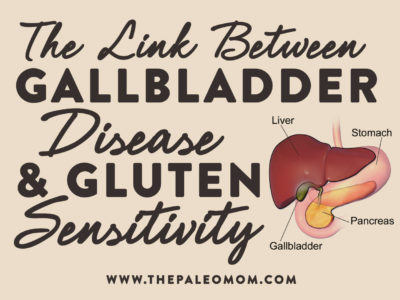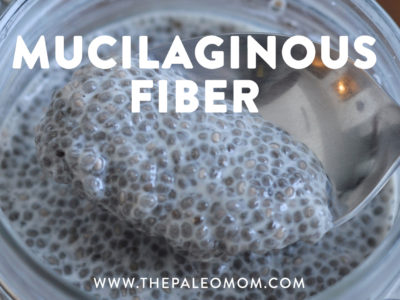Staying hydrated is essential for kidney health and helps optimize digestion, neurological function, circulation, body temperature regulation, and muscle contraction (see The Paleo Diet for Kidney Disease). It’s also super important for supporting a healthy and diverse gut microbiome.
The Mucus Layer of the Gut Barrier
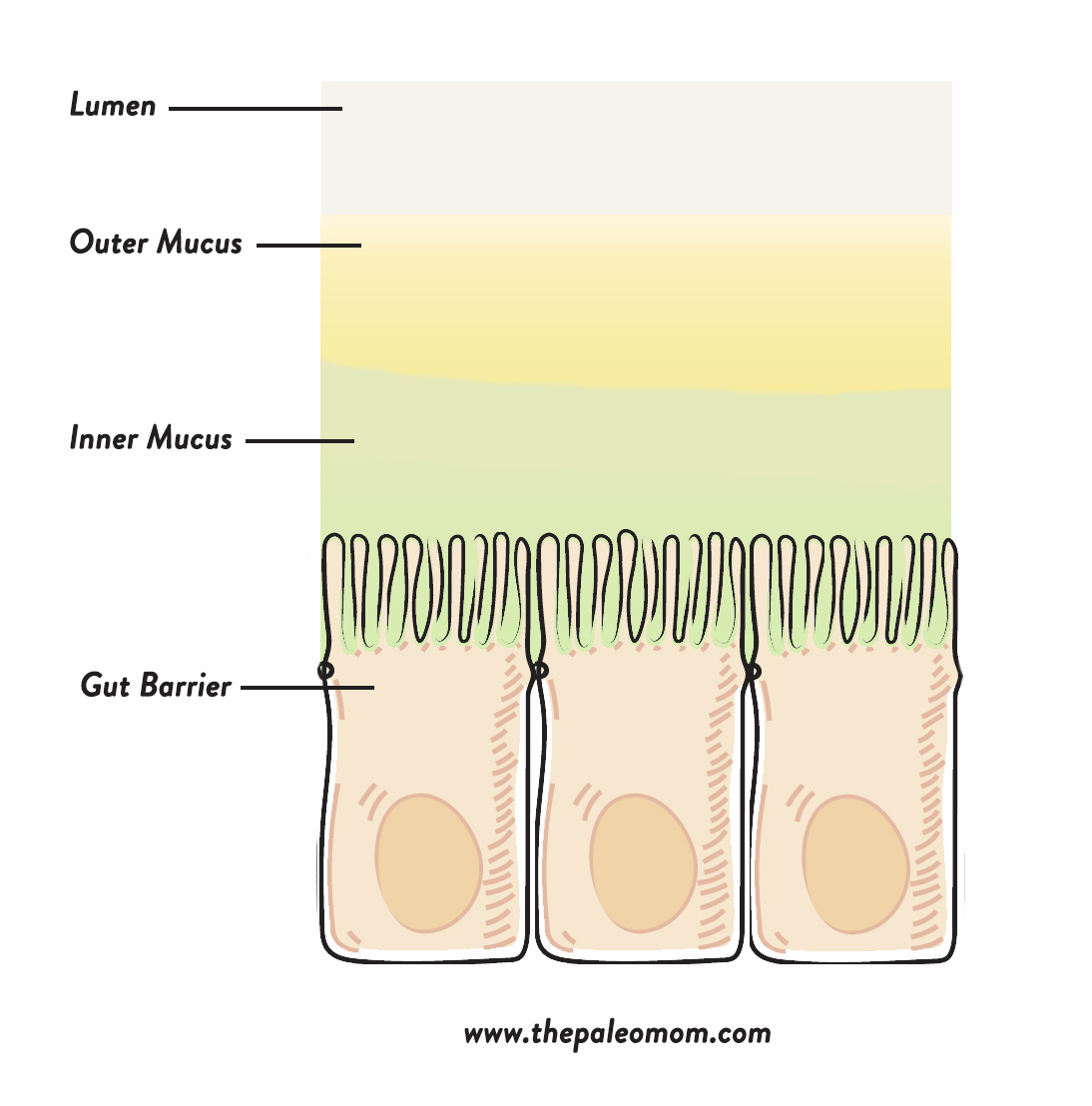 The gut barrier is a unique, highly selective barrier whose job is to let nutrients into the body while keeping everything else out. To achieve this function, the gut is equipped with an array of physiological defense mechanisms, including mucus, digestive enzymes, and acid. The gut also houses approximately 80 percent of our immune systems within the largest collection of lymphoid tissue in the body.
The gut barrier is a unique, highly selective barrier whose job is to let nutrients into the body while keeping everything else out. To achieve this function, the gut is equipped with an array of physiological defense mechanisms, including mucus, digestive enzymes, and acid. The gut also houses approximately 80 percent of our immune systems within the largest collection of lymphoid tissue in the body.
Digestion of consumed food into small molecules is necessary for the proper functioning of the gut barrier. The gut barrier, also called the intestinal barrier, is semipermeable. It protects the body by being permeable to nutrients (small molecules) while blocking everything else—including compounds in foods that our bodies can’t use as well as toxins, pathogens, and the trillions of microbes that live in our guts. What we can’t absorb from our food either becomes food for the bacteria that live in the intestines or is eliminated as waste.
How does the gut barrier work? The first line of defense against pathogens entering the body is digestion, with saliva, gastric acid and enzymes, and pancreatic enzymes all exerting a toxic action on these
infectious microorganisms via the destruction of their cell walls. If a pathogen escapes degradation, two mechanisms prevent it from adhering to the wall of the gastrointestinal tract. Peristalsis, the coordinated contraction and relaxation of muscle tissues to propel the contents of the gut from one end to the other, limits the amount of time a pathogen has to adhere to, colonize (take up residence and multiply), or cross the intestinal barrier. The entire intestinal surface is lined with mucus, produced by specialized cells embedded within the intestinal wall (called goblet cells), that acts as a physical barrier to pathogens but also contains a variety of antimicrobial compounds to destroy any infectious microbes that may enter the mucus layer. The specialized cells that connect firmly to each other to form the majority of the intestinal wall, a type of epithelial cell called enterocytes, also form a physical barrier to large amounts of pathogens. Whatever makes it through these defenses is then confronted by the immune system.
Intestinal mucus is composed of 98% water that forms a gel thanks mainly to the high molecular weight, heavily glycosylated protein mucin (mostly mucin 2, or MUC2) that is secreted by goblet cells. It used to be thought that the mucus layer simply performed two functions:
- as a protective barrier against bacterial adhesion and invasion (it also contains secretory immunoglobulin A [sIgA antibodies] and antimicrobial peptides)
- a lubricator to facilitate transport of material through the gastrointestinal tract.
However, we now know that the mucus layer is a point of high interaction with the gut microbiota. Different gut bacterial species tend to prefer different living conditions, with many probiotic strains preferring to live embedded in the mucus layer in close proximity to the gut epithelium. (Other species prefer the mass of material being digested, far out from the walls of the gut (the part of the intestine called the lumen.)
Hydration and the Gut Microbiome
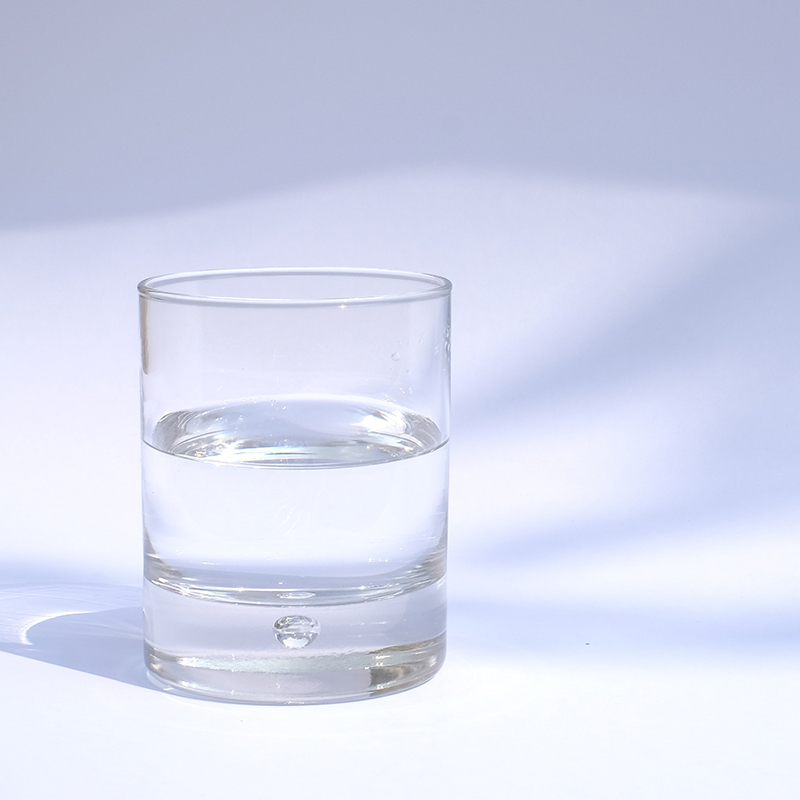
A variety of factors—including the concentrations of ions, salts and water—influence the physicochemical properties of the mucus layer. Hydration is particularly important for maintaining a healthy mucus layer, as dehydration makes the mucus layer firm and less viscous. And, this may influence the composition of the gut microbiome (see also What Is the Gut Microbiome? And Why Should We Care About It?).
Specifically, a mouse study manipulated hydration status by controlling chloride ion secretion by intestinal epithelial cells, which causes the passive flux of water from the intestinal lumen into the body following an osmotic gradient. The activation of water movement significantly reduced translocation of pathogenic Salmonella typhimurium and Escherichia coli (implicating that the mucus layer formed a more effective protective barrier against infection). Additionally, there was a significant shift in the intestinal microbiota, with increased numbers of bacteria belonging to Firmicutes and Bacteroidetes and a higher abundance of Lactobacillus and Alistipes.
The relation between mucosal hydration and our gut microbiota is a two-way street: our gut microbiota influence the cellular transport of solutes through the gut mucosa, contributing to the hydration state by reducing plasma osmolality. In a study of 123 healthy young adults from Madrid, plasma osmolality levels were negatively correlated with Clostridium abundance, while the Bacteroidetes phylum appears to reduce plasma sodium levels.
How much water do we need? The classic recommendation of eight 8-ounce glasses (64 ounces total) per day is mostly a misconception. The latest research suggests that men should consume about 13 cups (104 ounces, or 3 liters) of fluid per day, and women should consume about 9 cups (74 ounces, or 2.2 liters)—but this includes all beverages, as well as the water content of the food we eat. We get up to 20 percent of our daily water from food, particularly fruits, vegetables, and soups.
But, Avoid Alkaline Water!
 But, skip the alkaline water. Recall that probiotic species are adapted to an acidic environment, and in fact produce organic acids, like lactic acid and butyric acid, that help control the growth of pathogens by lowering the pH of the intestines. With this in mind, it shouldn’t come as surprise that alkaline water doesn’t do our gut microbiome any favors.
But, skip the alkaline water. Recall that probiotic species are adapted to an acidic environment, and in fact produce organic acids, like lactic acid and butyric acid, that help control the growth of pathogens by lowering the pH of the intestines. With this in mind, it shouldn’t come as surprise that alkaline water doesn’t do our gut microbiome any favors.
Commercial alkaline water typically has a pH of 8.8 or higher with high dissolved mineral content, typically calcium, potassium, and magnesium. Alkaline water is known to neutralize stomach acid, which on the surface may sound like an awesome thing for anyone who suffers from acid reflux. However, because the acidity of chyme (the mixture of food and gastric juices as they leave the stomach and enter the first segment of the small intestine, the duodenum) is a key signal to the pancreas to secrete digestive enzymes and to the gall bladder to secrete bile, neutralizing stomach acid can hinder digestion in a big way!
Studies also confirm that drinking alkaline water causes an undesirable shift in gut microbiome composition. One study in mice showed that drinking alkaline water for 4 weeks caused a huge decrease in probiotic Clostridium species with smaller decreases in Bifidobacterium and Lactobacillus, and a rise in Prevotella. A randomized, controlled cross-over intervention in adult men compared the impact on the gut microbiome of consuming 2 liters per day of alkaline water (pH 9) compared to neutral water (pH 7) for two weeks. While the alkaline water had no effect on overall species diversity or richness, the men benefited from higher hydration levels from neutral pH water, which significantly increased richness by 15% when comparing pre- and post-intervention samples.
In contrast, natural water sources are most commonly acidic, ranging in pH from 5.5 (fairly acidic) to 7.7 (weekly alkaline). And, drinking lower pH water appears to provide benefits to the microbiome. A study in non-obese diabetic mice compared neutral drinking water (pH 7) to acidic drinking water (pH 3.2) and showed that those mice drinking acidic water had reduced development of diabetes, higher Firmicutes, and reduced Bacteroidetes, Actinobacteria, and Proteobacteria starting as early as 2 weeks of age.
That’s a great rationale for adding that squeeze of lemon or lime juice to your water!
The studies that do show some benefit to alkaline water do not determine if the benefits are attributable to the actual alkalinity of the water, or the fact that commercial alkaline water has a fairly high concentration of dissolved minerals. It’s most likely the latter, and a high mineral content is actually easier to achieve in water that has a lower pH.
Because most natural sources of water are slightly acidic, minerals dissolve into the water from soil, sand and rocks that form stream and river beds, etc. The electrolyte content of natural freshwater can be very impressive. While it varies from source to source, it’s relatively common to get about 20mg/L calcium, 12mg/L magnesium, and 1mg/L potassium in river and stream water. Groundwater can give 3 to 10 times more! Adding mineral drops to water before drinking it is one way to recreate its natural mineral content, while avoiding an alkaline pH. I personally use ConcenTrace Trace Minerals.
The Problem with Chlorine, Chloramine and Fluoride
There’s also a good argument for filtering tap water to remove chlorine, chloramine and fluoride.
The water that comes out of our taps originates from lakes, rivers and groundwater and undergoes extensive filtration and disinfection (using chlorine or chloramine) before traveling via pipes to our homes. In a mouse experiment, animals fed tap water had higher levels of Acinetobacter (which includes several multiresistant pathogens) and Staphylococcus saprophyticus, a species related to urinary tract and other hospital-acquired infections, in their feces compared to animals given commercial bottled mineral water. Epidemiological studies have shown an association be between chlorinated drinking water and increased incidence of colorectal cancer. To understand whether this effect is mediated via the microbiome, a study compared the effect of drinking chlorinated water (10 mg/L of chlorine) versus tap water (0.7 mg/L of chlorine) in transgenic mice susceptible to colon cancer (adenomatous polyposis coli knockout mice). Chlorinated water causes a substantial increase in tumor development in the colon (interestingly, mice drinking tap water tended instead to develop tumors in the small intestine), associated with reduced levels of Clostridium perfringens, a species believed to have anti-tumor effects.
Some municipalities add fluoride (in the form of silicofluorides, by-products of manufacturing phosphate fertilizers) to tap water with the rationale of reducing tooth decay. Certainly, fluoride is beneficial when it makes prolonged contact with tooth surfaces, such as when we brush our teeth with fluoridated toothpaste. However, systemic fluoride (such as drinking fluoridated water) doesn’t not appear to exert much benefit to oral health. There have been large epidemiological studies demonstrating that fluoridation is not associated increased risk of cancer, heart disease, kidney disease, liver disease, thyroid disease, Alzheimer’s disease, birth defects, or Down’s syndrome. But some studies have uncovered correlations between local water fluoride levels and lower IQ in children, leading to fears that fluoride, which can penetrate the blood-brain barrier in fetuses, negatively impacts early brain development. Fluoride also seems to accumulate in the pineal gland (the gland in our brain that secretes the sleep hormone melatonin) as we age, although the ramifications of this are unknown. Overall, more research is needed to clarify the risks and benefits of water fluoridation for both children and adults. And, its potential impact on the gut microbiome may provide a compelling reason to avoid fluoridated water. See also Fluoride.
In a study of broiler chickens, high levels of dietary fluorine (at levels of 800 or 1200 mg/kg) resulted in lower microbial diversity, significantly lower levels of Lactobacillus and Bifidobacterium species, and significantly higher levels of Escherichia coli and Enterococcus compared to the control group (which consumed 22.6 mg/kg of fluorine). In a mouse study, 12 weeks of exposure to fluoride (at levels modeling human exposure to municipal water [4 ppm] and dental products [2.25 micrograms per day]) altered the oral microbial community by selectively depleting acidogenic taxa (including Parabacteroides distasonis, Bacteroides uniformis, and an unclassified Bacteroides species), but didn’t appear to harm the gut microbiota.
The EPA currently approves fluoride levels in water of up to 4 mg/L, while the Department of Health and Human Services recommends an upper limit of 0.7 mg/L (reduced in 2011 from a range of 0.7 to 1.2 mg/L), due to dental fluorosis, a condition in which excess fluorine compounds cause discoloration and mottling of the teeth. However, if we are using fluoridated toothpaste, drinking non-fluoridated water appears to pose no risk to oral health. Currently, most developed countries (including Japan and the majority of Western Europe) do not fluoridate their water.
While an inexpensive activated carbon (charcoal) water filter can remove chlorine, chloramine and fluoride from tap water, unfortunately these common water filtration systems can’t remove pesticide residues.
Pesticide Residues in Tap Water
Of all the pesticide residues that frequently show up in water supplies, glyphosate poses a particular challenge. See also Glyphosate (Roundup) as a Cause of Celiac Disease.
Glyphosate, the active ingredient in Monsanto’s weed killer Roundup, is a broad-spectrum herbicide that can kill both grasses and leafy weeds. It works by inhibiting an enzyme (5-enolpyruvylshikimic acid-3-phosphate synthase, or EPSP synthase), which is used by bacteria, archaea, fungi, algae, some protozoans and plants to synthesize folates (vitamin B9), ubiquinone, menaquinones (vitamin K2), phenolic compounds, and the aromatic amino acids tyrosine, tryptophan, and phenylalanine. The pathway this affects (called the shikimate pathway, or shikimic acid pathway) doesn’t exist in animals, which is part of why glyphosate has historically been considered to have low toxicity in animals. But, now that we understand that we have at least as many bacterial cells living within our body as we do human cells, and that those bacteria are essential to our health, the relevance of glyphosate exposure comes into focus.
Many bacterially-derived compounds that benefit human health are produced vis the shikimate pathway. One rat study evaluated the impact on the microbiome of two weeks of glyphosate consumption (at a doses up to 50 times higher than the European Acceptable Daily Intake [ADI] of 0.5 mg/kg body weight /day), and showed a dose-dependent increase in fecal pH attributable to a reduction in acetic acid production, implying metabolomic impact of glyphosate exposure.
Even more concerning, there’s growing evidence that glyphosate disrupts gut microbiome composition. In studies in poultry, cattle, and pigs, glyphosate exposure increases the ratio of pathogenic bacteria to probiotic microbes, reducing Bifidobacteria, Lactobacillus, and Enterococcus while increasing Salmonella and Clostridium (which are resistant to glyphosate). In a long-term rat study, the impact on the gut microbiome was evaluated following nearly two years of glyphosate exposure via drinking water at three different doses (0.1 ppb, 400 ppm and 5000 ppm). Glyphosate caused a large increase in the Bacteroidetes family S24-7 (associated with obesity and inflammation) and a decrease in Lactobacillus species in females (more modest changes in males), altered the Firmicutes to Bacteroidetes ratio to one more closely associated with chronic disease, and the authors concluded “our data suggests that the exposure to an environmental concentration of [Roundup] residues could have a role in the current epidemic of gut dysbiosis”. Chillingly, this occurs even at levels well below the US ADI of 1.75 mg/kg body weight /day. In fact, there is no strong dose response: very similar microbiome changes are seen at glyphosate exposures as low 0.1 ppb (equivalent to about 0.0003% of the ADI) and as high as 5000 ppm (equivalent to 128X the ADI). Another rat study, this one thirteen weeks long and exposing pregnant and lactating rats to levels of glyphosate at about the US ADI, showed an even bigger impact on microbiome of the offspring. Offspring of mothers exposed to glyphosate throughout pregnancy and lactation had lower microbial richness, significantly higher prevalence of Prevotella and Mucispirillum species and lower prevalence of Lactobacillus and Aggregatibacter species.
In the US, glyphosate has been used for over 40 years and is used mostly to kill weeds that interfere with agricultural crops (typically corn, soy, and canola). As a result, third party testing and scientific studies are showing that glyphosate contamination of the food supply has become very common, even affecting organic crops, although the paucity of methodical testing for glyphosate residues and metabolites is alarming in itself. The FDA found measurable levels of glyphosate residues in 63.1% of corn (food crop) samples tested and 67.0% of the soybean (food crop) samples tested, but other than stating that levels were below acceptable maximums, did not state the level of contamination in their 2016 Pesticide Residue Monitoring report. A Swiss study of foods purchased at a grocery store showed that legumes had the highest concentrations of glyphosate residues, up to 2.95 mg/kg. United Kingdom government testing of glyphosate residues in wholegrain bread showed levels up to 0.9 mg/kg. A study of foods purchased in the Philadelphia, USA metropolitan area showed 59 percent of honey samples (including 45 percent of organic honey samples) contained glyphosate residues (average 64 ng/g and up to 163 ng/g), and 36 percent of soy sauce contained glyphosate residues (average 242 ng/mL and up to 564 ng/mL). Third party testing of popular breakfast cereals, crackers and cookies by the Detox Project and Food Democracy Now! showed alarming levels of glyphosate residues in all, between 289.47 ppb and up to 1,125.3 ppb. Roundup Ready GMOs have the highest level of glyphosate residues. A study of Roundup Ready soybeans from Iowa measured 3.26 mg/kg glyphosate residues on average with the highest tested sample at 8.8 mg/kg. (The authors also showed that organic soybeans had a substantially healthier nutritional profile than either conventional or genetically-modified soybeans.)
In addition, third party testing of 85 tap water samples by Moms Across America and Sustainable Pulse showed that 35 of the samples had glyphosate levels up to 0.3 ppb (above the level shown to impact the composition of rat microbiomes).
Studies prove that our current levels of exposure are sufficient for measurable amounts of glyphosate to get into our bodies. One study showed that 44% of city dwellers in 18 countries in Europe had detectable glyphosate residues in their urine, despite Europe’s more aggressive campaign against GMO foods. A pilot study in the Unites States of America evaluating 131 urine samples from across the country detected glyphosate residues in the urine of 86.7% of them, the highest observed detection frequency in the Midwest at 93.3% and the lowest in the South at 69.2%.
Taken together, these data make a solid argument for eating organic food, ideally produced in small-scale family operated farms located distant from industrial agriculture, and filtering drinking water using a high quality filter
Filter Your Tap Water!
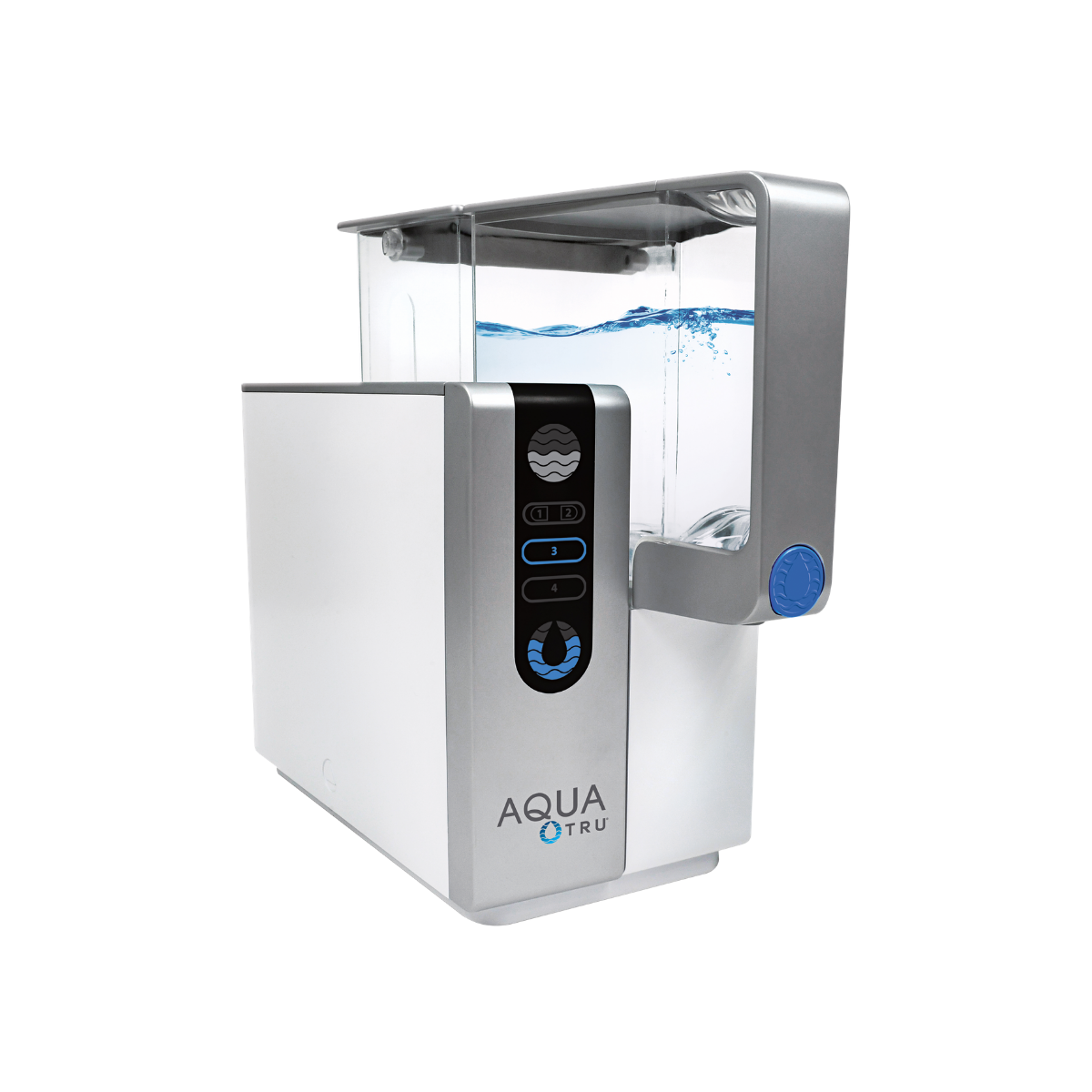 Studies demonstrate that the two most common at-home water filtration methods, activated carbon (or charcoal) filtration and UV treatment, are both ineffective at removing glyphosate from contaminated drinking water (although they can remove the majority of chlorine, chloramine and fluoride). More expensive nanofiltration systems can remove about 85% of glyphosate (ultrafiltration is ineffective) and reverse osmosis filtration systems are effective at removing glyphosate.
Studies demonstrate that the two most common at-home water filtration methods, activated carbon (or charcoal) filtration and UV treatment, are both ineffective at removing glyphosate from contaminated drinking water (although they can remove the majority of chlorine, chloramine and fluoride). More expensive nanofiltration systems can remove about 85% of glyphosate (ultrafiltration is ineffective) and reverse osmosis filtration systems are effective at removing glyphosate.
Because the impact of glyphosate on the gut microbiome is not dose dependent, my recommendation is an at-home reverse osmosis water filtration system for all drinking water. I personally have been using an AquaTru countertop reverse osmosis water filter for almost four years and it’s still going strong (with filter replacements as needed, of course).
AquaTru is offering my readers AMAZING $150 off their system! Discount automatically applied here.
In summary, you can help support your gut microbiome by staying hydrated by drinking predominantly filtered water that is slightly acidic to neutral pH, ideally with electrolytes and other dissolved minerals added.
Citations
Adams A., Friesen M., Olson A., Gerona R. Biomonitoring of glyphosate across the United States in urine and tap water using high-fidelity LC-MS/MS method. APAMT 2015
Bøhn T, Cuhra M, Traavik T, Sanden M, Fagan J, Primicerio R. Bohn T. Compositional differences in soybeans on the market: glyphosate accumulates in Roundup Ready GM soybeans. Food Chem. 2014 Jun 15;153:207-15. doi: 10.1016/j.foodchem.2013.12.054.
Colgan SP. Swimming through the gut: implications of fluid transport on the microbiome. Dig Dis Sci. 2013 Mar;58(3):602-3. doi: 10.1007/s10620-013-2575-3.
Data from the Annual Reports of the UK Expert Committee on Pesticide Residues in Food (2006-2011). Available at www.pesticides.gov.uk/guidance/industries/pesticides/advisory-groups/PRiF/PRiF_Results_and_Reports
Dias MF, Reis MP, Acurcio LB, et al. Changes in mouse gut bacterial community in response to different types of drinking water. Water Res. 2018 Apr 1;132:79-89. doi: 10.1016/j.watres.2017.12.052.
Friends of the Earth Europe (2013) Human contamination by glyphosate. http://www.foeeurope.org/sites/default/files/press_releases/foee_4_human_contamination_glyphosate.pdf
Gillezeau C, van Gerwen M, Shaffer RM, Rana I, Zhang L, Sheppard L, Taioli E. The evidence of human exposure to glyphosate: a review. Environ Health. 2019 Jan 7;18(1):2. doi: 10.1186/s12940-018-0435-5.
Glyphosate in Food and Water, The Detox Project https://detoxproject.org/glyphosate-in-food-water/
Glyphosate: Unsafe of Any Plate. Report from Food Democracy Now! and the Detox Project. 2016 https://s3.amazonaws.com/media.fooddemocracynow.org/images/FDN_Glyphosate_FoodTesting_Report_p2016.pdf
Hall JE, White WJ, Lang CM. Acidification of drinking water: its effects on selected biologic phenomena in male mice. Lab Anim Sci. 1980 Aug;30(4 Pt 1):643-51.
Hansen TH, Thomassen MT, Madsen ML, et al. The effect of drinking water pH on the human gut microbiota and glucose regulation: results of a randomized controlled cross-over intervention. Sci Rep. 2018 Nov 9;8(1):16626. doi: 10.1038/s41598-018-34761-5.
Jönsson J, Camm R, Hall T. Removal and degradation of glyphosate in water treatment: a review. Journal of Water Supply: a Review Research and Technology-Aqua (2013) 62 (7): 395-408.https://doi.org/10.2166/aqua.2013.080
Keely S, Kelly CJ, Weissmueller T, et al. Activated fluid transport regulates bacterial-epithelial interactions and significantly shifts the murine colonic microbiome. Gut Microbes. 2012 May-Jun;3(3):250-60. doi: 10.4161/gmic.20529. Epub 2012 May 1.
Lozano VL, Defarge N, Rocque LM, et al. Sex-dependent impact of Roundup on the rat gut microbiome. Toxicol Rep. 2017 Dec 19;5:96-107. doi: 10.1016/j.toxrep.2017.12.005.
Mao Q, Manservisi F, Panzacchi S, et al. The Ramazzini Institute 13-week pilot study on glyphosate and Roundup administered at human-equivalent dose to Sprague Dawley rats: effects on the microbiome. Environ Health. 2018 May 29;17(1):50. doi: 10.1186/s12940-018-0394-x.
Nielsen LN, Roager HM, Casas ME, et al. Glyphosate has limited short-term effects on commensal bacterial community composition in the gut environment due to sufficient aromatic amino acid levels. Environ Pollut. 2018 Feb;233:364-376. doi: 10.1016/j.envpol.2017.10.016.
Pesticide Residue Monitoring Program, Fiscal Year 2016 Pesticide Report U.S. Food and Drug Administration
Rubio F., Guo E., Kamp L., Survey of Glyphosate Residues in Honey, Corn and Soy Products. J Environ Anal Toxicol 2014, Vol 5(1): 249 DOI: 10.4172/2161-0525.1000249
Samsel A, Seneff S. Glyphosate, pathways to modern diseases II: Celiac sprue and gluten intolerance. Interdiscip Toxicol. 2013 Dec;6(4):159-84. doi: 10.2478/intox-2013-0026.
Samsel A., Seneff S. Glyphosate’s Suppression of Cytochrome P450 Enzymes and Amino Acid Biosynthesis by the Gut Microbiome: Pathways to Modern Disease. Entropy 2013, 15(4), 1416-1463; https://doi.org/10.3390/e15041416
Sasada T, Hinoi T, Saito Y, et al. Chlorinated Water Modulates the Development of Colorectal Tumors with Chromosomal Instability and Gut Microbiota in Apc-Deficient Mice. PLoS One. 2015 Jul 17;10(7):e0132435. doi: 10.1371/journal.pone.0132435.
Sofi MH, Gudi R, Karumuthil-Melethil S, et al. pH of drinking water influences the composition of gut microbiome and type 1 diabetes incidence. Diabetes. 2014 Feb;63(2):632-44. doi: 10.2337/db13-0981..
Useros NR, Gheorghe A, Labajos RS, Rebato EN, Sanchez AM. HYDRAGUT study: Influence of HYDRAtion status on the GUT microbiota and their impact on the immune system. The FASEB Journal 2015 29:1_supplement.
Wolf KJ, Daft JG, Tanner SM, et al. Consumption of acidic water alters the gut microbiome and decreases the risk of diabetes in NOD mice. J Histochem Cytochem. 2014 Apr;62(4):237-50. doi: 10.1369/0022155413519650.
Yasuda K, Hsu T, Gallini CA., et al. Fluoride Depletes Acidogenic Taxa in Oral but Not Gut Microbial Communities in Mice. mSystems. 2017 Aug 8;2(4). pii: e00047-17. doi: 10.1128/mSystems.00047-17.
Zoller O, Rhyn P, Rupp H, Zarn JA, Geiser C. Glyphosate residues in Swiss market foods: monitoring and risk evaluation. Food Addit Contam Part B Surveill. 2018 Jun;11(2):83-91. doi: 10.1080/19393210.2017.1419509.












